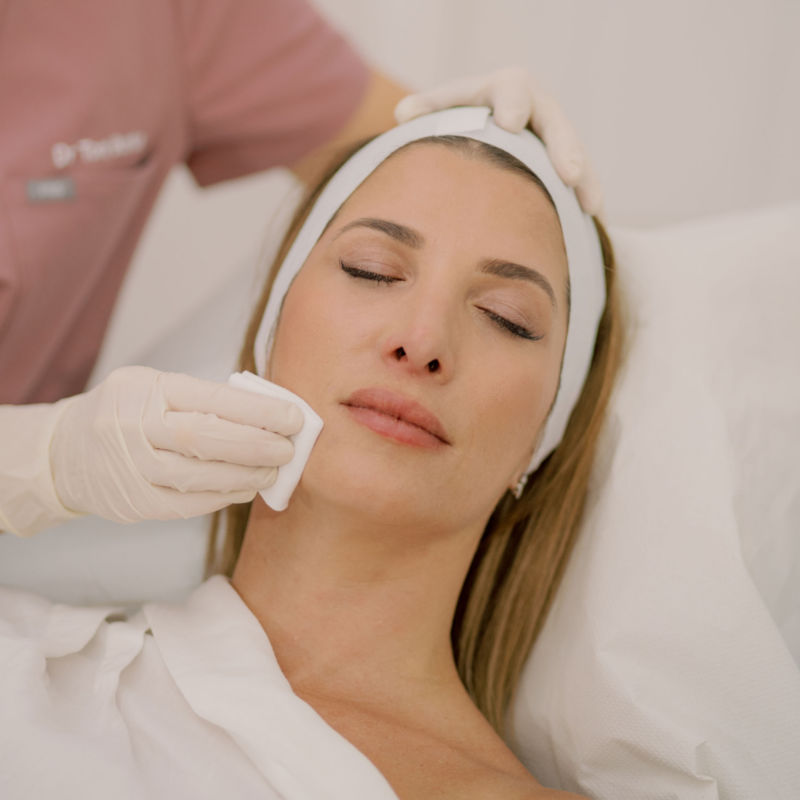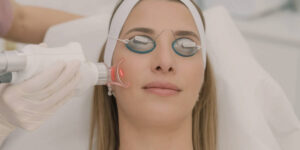

Skin Peels
As time passes, our skin can lose its youthful vitality, leaving us with unwanted signs of ageing such as wrinkles and fine lines. Enter chemical peels – a non-surgical marvel that can help turn back the clock by unveiling fresher, smoother skin. Skin peels work by gently exfoliating the skin’s top layer, stimulating collagen production, and promoting natural rejuvenation. They can address various concerns, including wrinkles, uneven skin tone, acne scars, and age spots, leaving you with a more youthful and refreshed appearance.
Treatment snapshot
45 mins
appointment
2-3/5
discomfort
1-4 days
downtime
Lasts
months
FAQs
Generally, chemical peels are designed to improve the appearance of the skin temporarily:
- Superficial or light chemical peels: These peels provide mild improvements in skin texture and tone. The results may last for several weeks to a few months, but they are not permanent.
- Medium-depth chemical peels: These peels penetrate deeper into the skin and can provide more significant improvements in wrinkles, sun damage, and uneven skin tone. The results may last several months to a year, but maintenance treatments may be needed.
- Deep chemical peels: Deep peels can produce longer-lasting results compared to superficial and medium-depth peels. The effects can last for several years, but these peels are typically reserved for specific cases and require a longer recovery period.
To maintain the benefits of a chemical peel, it’s often necessary to follow a good skincare regimen, use sun protection, and consider periodic maintenance treatments.
Chemical peels can be effective in reducing certain types of pigmentation issues on the skin, such as:
- Hyperpigmentation: Areas of darkened skin caused by sun damage or post-inflammatory hyperpigmentation (PIH).
- Freckles and Sun Spots: Superficial chemical peels can target freckles and sun spots (solar lentigines) by exfoliating the top layer of skin and encouraging the growth of new, evenly pigmented skin.
- Uneven Skin Tone: Chemical peels can improve overall skin tone and texture by removing the outer layer of damaged skin cells, revealing healthier, less pigmented skin beneath.
Chemical peels employ different ingredients for exfoliating and rejuvenating the skin:
- Alpha Hydroxy Acids (AHAs): Work on the surface to improve texture and address mild issues.
- Beta Hydroxy Acids (BHAs): Penetrate deeper to treat acne and clogged pores.
- Enzyme Peels: Use natural enzymes for gentle exfoliation, suitable for sensitive skin.
- TCA (Trichloroacetic Acid): Medium-depth peels for moderate wrinkles and pigmentation.
- Phenol: Deep peels for severe wrinkles, scars, and sun damage, with longer recovery times.
Chemical peels can effectively treat acne by exfoliating the skin’s surface, unclogging pores, and reducing inflammation. They help prevent new breakouts and improve the appearance of post-acne scarring. The choice of peel depends on the severity of the acne, with superficial peels suited for mild cases and medium-depth peels for more severe acne. Combining chemical peels with other acne treatments can yield optimal results, making the skin smoother, clearer, and more even in texture.
Skin peels are a common treatment and usually safe when performed by an experienced medical practitioner. However, some potential consequences of a poorly performed or inappropriate chemical peel include:
- Excessive Redness and Irritation
- Hyperpigmentation or Hypopigmentation: Darkening (hyperpigmentation) or lightening (hypopigmentation) of the skin.
- Scarring: In severe cases, chemical peels can cause scarring, especially if the peel penetrates too deeply or if there is an adverse reaction to the peel solution.
- Infection
- Allergic Reaction
- Herpes Reactivation: A chemical peel can trigger a reactivation of the virus, leading to cold sores.
- Worsening of Skin Conditions: Inappropriate peels or incorrect post-peel care can exacerbate certain skin conditions, such as rosacea or dermatitis.
Other aesthetic treatments that can improve skin texture and tone:
- Medical Grade Skincare: Prescribed skincare products with active ingredients.
- Microneedling: Stimulates collagen production for smoother skin.
- Limelight IPL: Addresses sunspots, redness, and vascular concerns.
- CO2 Laser Resurfacing: Treats deep wrinkles, scars, and skin damage.
- Skin Boosters: Injectable treatments for hydration and texture.










